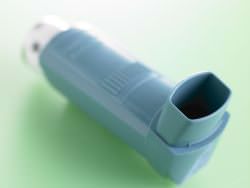Childhood Asthma affects over 7 million children in the United States. Careful observation and treatment is needed to get your child the care he or she needs.
Childhood Asthma Treatment
For those with childhood asthma, it can be very scary when they realize they can no longer breathe. Childhood asthma can be controlled. Seeing your doctor is the first step to getting treatment, but these are a few of the ways that childhood asthma is controlled.
For long term treatment there are several paths a treatment course can take, the most common being the prescription of inhaled corticosteroids. An inhaled corticosteroid is an anti-inflammatory that will help keep an open airway for you child. This is often used on a daily basis depending on how severe the childhood asthma is. These corticosteroids are often given via an inahler or a nebulizer.
An inhaler is a little tube that gives out pre-measured amounts of medication in “puffs.” This is the most common way of getting asthma medication. A nebulizer is an alternate way of getting medication. Nebulizers are worn as masks or in tubes that give medication. Nebulizers are easier for younger children to use because they just put on the mask or put the tube in their mouth and breathe in.
The second most common childhood asthma medication for long-term control is long-acting beta2-agonists also known as bronchodialaters. These medications also help open the airway for those with childhood asthma.
Short term treatment for childhood asthma consists of inhaled substances known as short-acting beta2-agonists. These help to reduce the inflammation of the airway of your child for just a few hours in-case of a “flare-up.”
How Can You Help?
Besides medication, there are several things you can do as a caregiver to help control your child’s asthma. First, create an action plan and discuss it with your child. Decide what you will do on a long-term basis and what happens if your child’s asthma flares up or they have an attack. Secondly, share this plan with your child’s teachers and other caregivers so that they know what to do in case of an emergency. Also, help them understand how to administer the medication.
Nothing is better for asthma than to prevent it. Do this by finding out what triggers your child’s asthma and attempt to avoid those triggers. This is the best possible treatment for childhood asthma. Another way to prevent serious asthma problems is to use a peak flow meter. This measures the strength of the air your child is breathing out. This can indicate whether or not your child is breathing correctly. Finding out early that your child is having asthma problems is key to preventing a serious attack.
Childhood Asthma is an epidemic in the United States. Learning about the medications and knowing how you can help your child is imperative when it comes to saving your child’s life. To learn more or to see a doctor, visit Care Club.

